
(a)
Interpretation:
The complete and detailed mechanism of the given reaction is to be drawn, and the product is to be predicted.
Concept introduction:
There are two locations in an
Answer to Problem 18.6P
The product of given reaction is
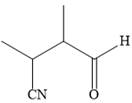
The mechanism is drawn as

Explanation of Solution
Even though
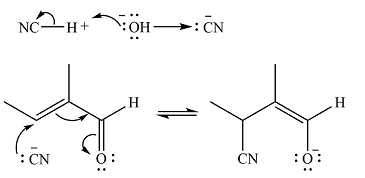
The negatively charged oxygen extracts a proton from the solvent molecule (

The enol form being relatively unstable rapidly tautomerizes to the more stable keto form of the product.
Thus, the final product of the reaction is
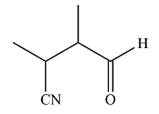
And the complete mechanism can be drawn as

The mechanism and the product of the given reaction were determined on the basis of reversible addition of cyanide ion to the
(b)
Interpretation:
The complete and detailed mechanism of the given reaction is to be drawn, and the product is to be predicted.
Concept introduction:
There are two locations in an
Answer to Problem 18.6P
The product of the given reaction is
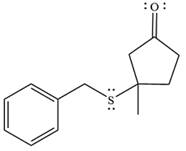
The mechanism is drawn as
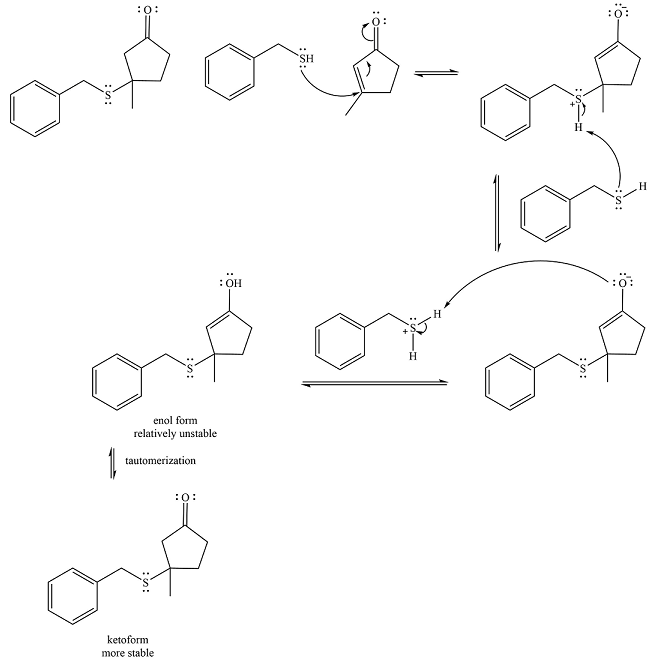
Explanation of Solution
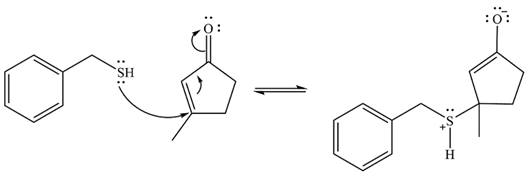
Two proton transfer steps follow and produce an uncharged enol. The enol form is relatively unstable and rapidly tautomerizes to the more stable keto form.
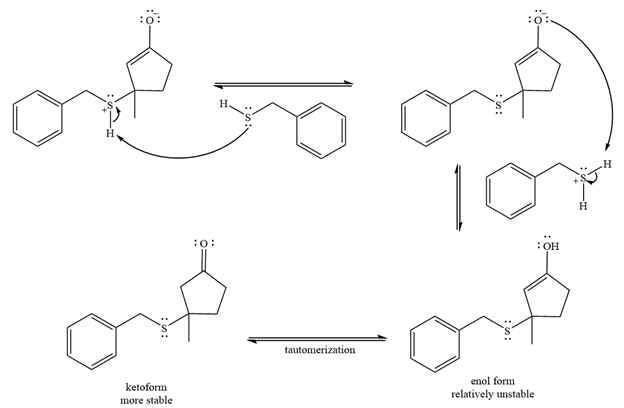
Thus, the final product of the reaction is
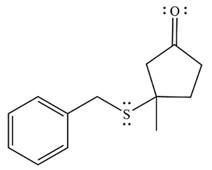
And the complete mechanism can be drawn as

The mechanism and the product of the given reaction were determined on the basis of reversible addition of the uncharged nucleophile to the
(c)
Interpretation:
The complete and detailed mechanism of the given reaction is to be drawn and the product is to be predicted.
Concept introduction:
There are two locations in an
Answer to Problem 18.6P
The product of given reaction is

The mechanism of the reaction is

Explanation of Solution
Pyrrolidine is uncharged nucleophile and favors conjugate addition to an

After the nucleophilic addition, two proton transfer steps occur to produce an uncharged enol. The enol form is relatively unstable and rapidly tautomerizes to the more stable keto form.
Thus, the final product of the reaction is

And the complete mechanism of the reaction can be drawn as

The mechanism and the product of the given reaction were determined on the basis of reversible addition of the uncharged nucleophile to the
Want to see more full solutions like this?
Chapter 18 Solutions
ORG.CHEM W/TEXT+SOLU.MANUAL
- Draw the complete, detailed mechanism for the reaction shown here. Will the product be optically active? Explain.arrow_forwardDraw the complete, detailed mechanism for the following reaction.arrow_forwardDraw the complete, detailed mechanism and the products for each of the following reactions.arrow_forward
- Predict the major products of the following reactions. Draw the complete, detailed mechanism that leads to the formation of each of those products.arrow_forward(SYN) Show how to synthesize the following molecule from any compounds containing two carbons. Draw the complete, detailed mechanism for the reaction.arrow_forwardDetermine the major product of each reaction in Problem and draw the complete, detailed mechanism. Pay attention to stereochemistry where appropriate.arrow_forward
- Predict the major product of each of the following reactions and provide the complete, detailed mechanismarrow_forwardDraw a complete, detailed mechanism for the following reaction. A key intermediate is provided.arrow_forwardPropose a mechanism for the reaction shown here, which takes place under conditions that favor anarrow_forward
- Help, explain in detail please. Thank you! Did the overal reaction shown here occur by and SN2, Sn1, E2, or E1 mechanism? How do you know? Draw the complete, detailed mechanism to account for the formation of both products.arrow_forwardThe reaction shown here is a halosulfonation, which is a useful variation of the sulfonation reaction. Draw the complete mechanism for this reaction.arrow_forwardDraw a detailed mechanism of the following reactions and determine the major product:arrow_forward
 ChemistryChemistryISBN:9781305957404Author:Steven S. Zumdahl, Susan A. Zumdahl, Donald J. DeCostePublisher:Cengage Learning
ChemistryChemistryISBN:9781305957404Author:Steven S. Zumdahl, Susan A. Zumdahl, Donald J. DeCostePublisher:Cengage Learning ChemistryChemistryISBN:9781259911156Author:Raymond Chang Dr., Jason Overby ProfessorPublisher:McGraw-Hill Education
ChemistryChemistryISBN:9781259911156Author:Raymond Chang Dr., Jason Overby ProfessorPublisher:McGraw-Hill Education Principles of Instrumental AnalysisChemistryISBN:9781305577213Author:Douglas A. Skoog, F. James Holler, Stanley R. CrouchPublisher:Cengage Learning
Principles of Instrumental AnalysisChemistryISBN:9781305577213Author:Douglas A. Skoog, F. James Holler, Stanley R. CrouchPublisher:Cengage Learning Organic ChemistryChemistryISBN:9780078021558Author:Janice Gorzynski Smith Dr.Publisher:McGraw-Hill Education
Organic ChemistryChemistryISBN:9780078021558Author:Janice Gorzynski Smith Dr.Publisher:McGraw-Hill Education Chemistry: Principles and ReactionsChemistryISBN:9781305079373Author:William L. Masterton, Cecile N. HurleyPublisher:Cengage Learning
Chemistry: Principles and ReactionsChemistryISBN:9781305079373Author:William L. Masterton, Cecile N. HurleyPublisher:Cengage Learning Elementary Principles of Chemical Processes, Bind...ChemistryISBN:9781118431221Author:Richard M. Felder, Ronald W. Rousseau, Lisa G. BullardPublisher:WILEY
Elementary Principles of Chemical Processes, Bind...ChemistryISBN:9781118431221Author:Richard M. Felder, Ronald W. Rousseau, Lisa G. BullardPublisher:WILEY





